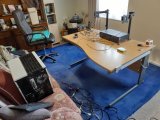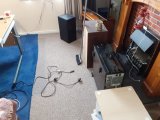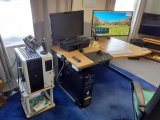In reality it's been a couple of years since I last managed to dismantle the computer desk and have a tidy, wasn't too well last year.
I have to say I'm pretty pleased with myself this time though, I had NO spurious cables or fittings left over at all.
I have to say I'm pretty pleased with myself this time though, I had NO spurious cables or fittings left over at all.










